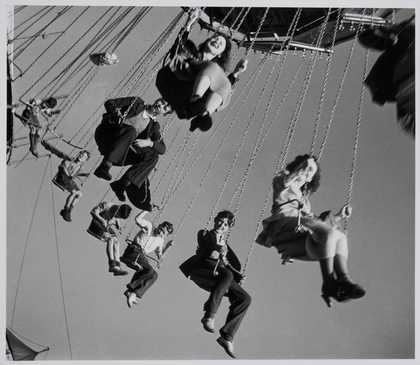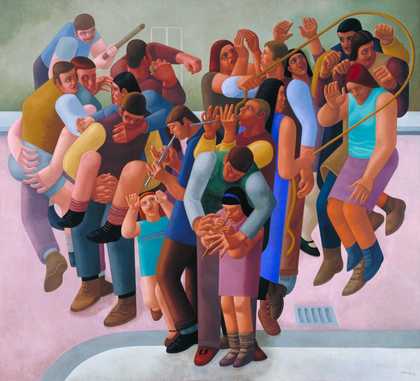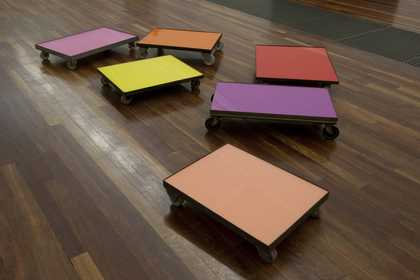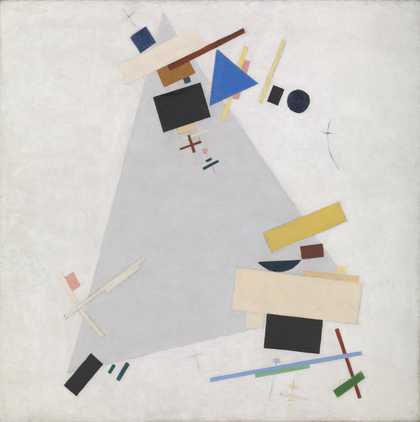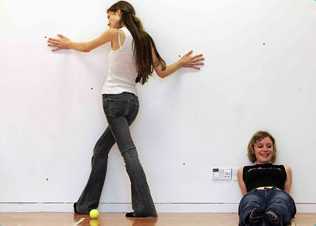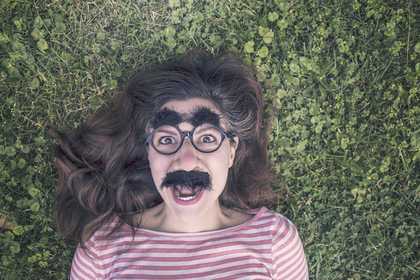1. What fun feels like!

Wassily Kandinsky
Swinging (1925)
Tate
What does playing in a playground make you feel like?
The artist Wassily Kandinsky believed that colours, lines and shapes affect our feelings and emotions in the same way that music can. You know how a slow sad song makes you feel down and a pop song with a happy, fast beat makes you want to dance? Well Kandinsky believed that creating a painting is like composing music.
In 1911 he wrote:
‘Colour is the keyboard, the eyes are the hammers, the soul is the piano with many strings. The artist is the hand which plays, touching one key or another, to cause vibrations in the soul’.
Have a go at using bright colours, dynamic shapes and lines shooting into the air to express your whizzing, climbing, running, dizzying playground experiences!
